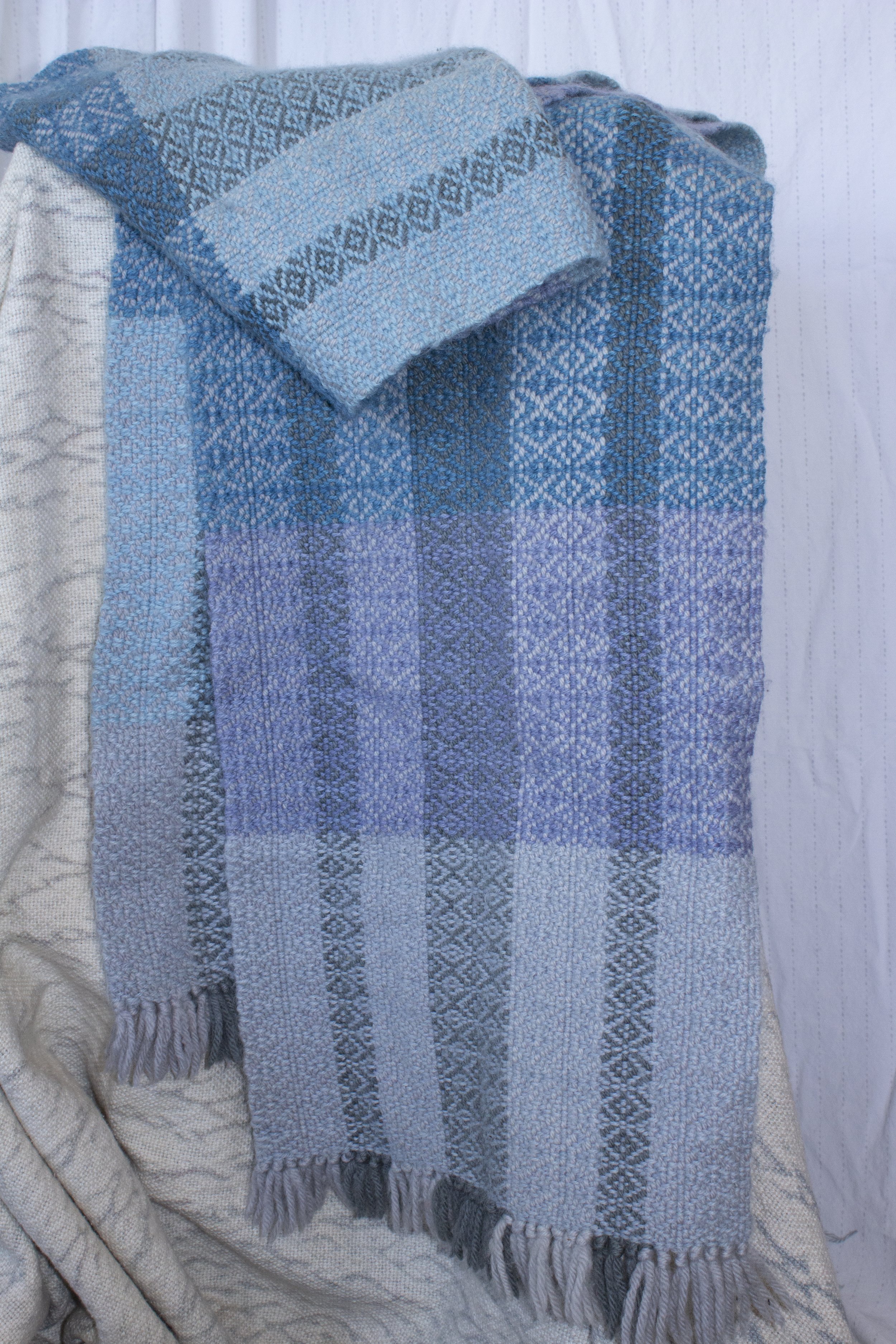
Table Runners
Table runners and scarves are some of my favorite weaving projects. Fast to set up, quick to weave, these pieces pull spaces together beautifully. Usually created using a floor loom, scarves and runners give me a space to experiment with color, texture and warp/weft interplay.
Birdseye Table Runner.
I wove this table runner in the winter of 2018 while I was living in Colorado Springs, CO. I hand-dyed alpaca wool for this piece, getting color inspiration from the hues of Pikes Peak Mountain in the evening. What I particularly love about this pattern, known as a birdseye weave, is how it elegantly works the warp and weft colors together. The greys dampen the bright blues and purples in the weft and warp. However, each hue of blue interacts differently with the grey warp, making the birdseye form more or less distinct.
As you can see particularly well in this image, brighter or lighter blues make the birdseye form pop out of the piece more, while the purple hues tend to blend the birdseye into the warp color.


Log Cabin Weave .
Can you see where this style of weaving, known as log cabin weave, gets its name from? Though the pattern looks intricate, it is an optical illusion. A plain-weave textile is transformed into a delicate alternating log cabin pattern by placing certain brown or white warp strings next to each other. This table runner was made with alpaca wool sourced from Island Alpaca Company on Martha’s Vineyard in the summer of 2020. I chose these two colors because, while they contrast each other beautifully, the brown and white are not overpowering and allow the pattern to be the focal point of the textile. Also, they reminded me of a snowy cabin in the woods!
Because of the simplicity of this plain weave, my focus for this piece was to create clean selvage lines and even tension between each weft shot. For this type of weaving, even pressure is critical to getting consistently shaped squares.


Clover Table Runner.
This table runner was fun to weave because I drafted and designed the pattern myself. Although I didn’t realize this when I created this textile, the image is inverted on the back of the weaving. For example, the clover shape on the front of the piece looks like it was cut out from a square of color on the back. Each weft shot of blue or green is secured into place between plain-weave shots of orange.
I enjoy how the different weights of weft yarn give the runner a three-dimensional texture. Usually achieved through pick-up double-weave, this piece's dimensional element adds a unique design element.
The three dimensional shape of the clovers is very prominent here. Although it is hard to see because of the bulkiness of the yarn, there is a plain-weave shot of orange yarn in between each strand of blue or green yarn. Because of the texture and colors, this runner is a staple for special dinners or events at my home.











